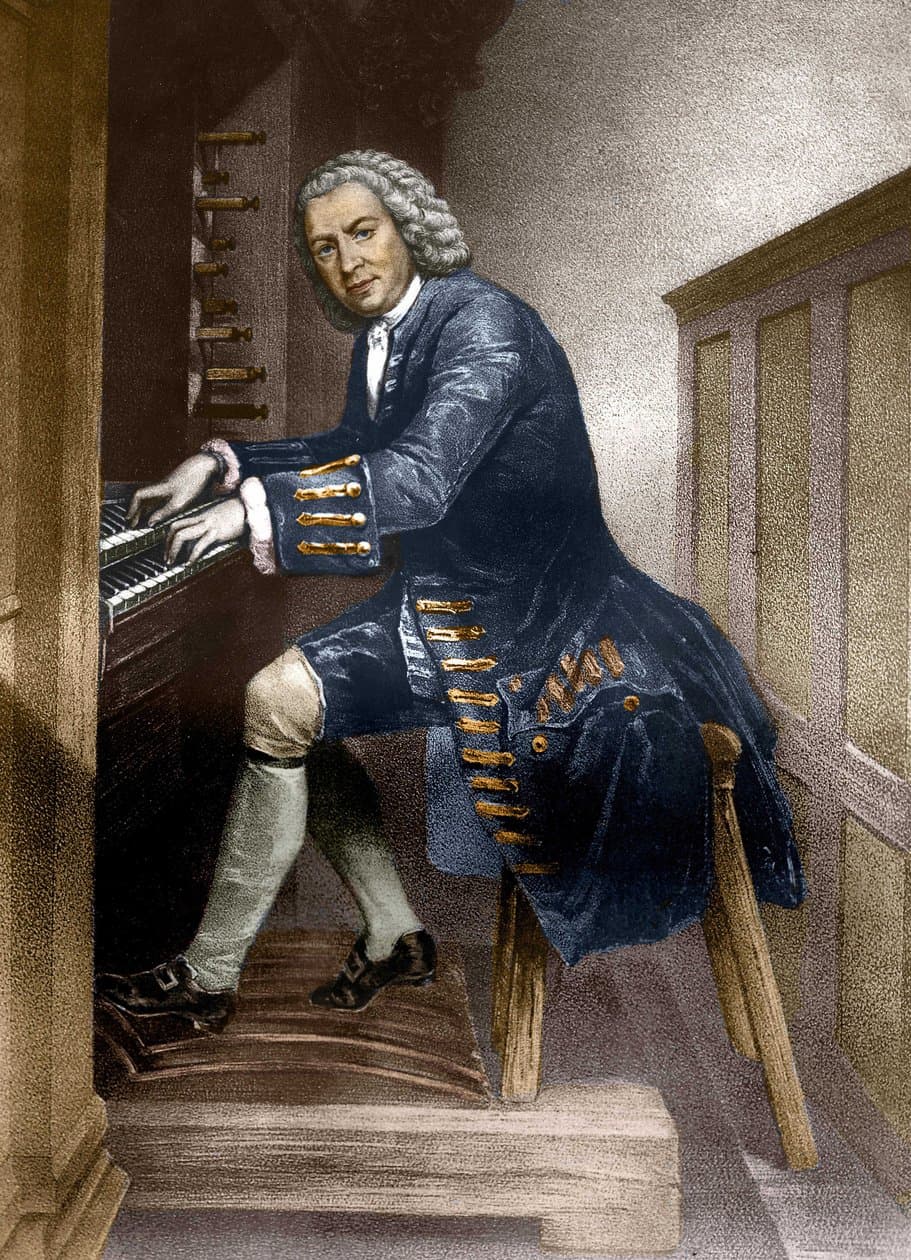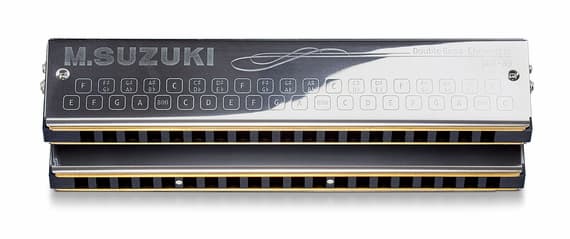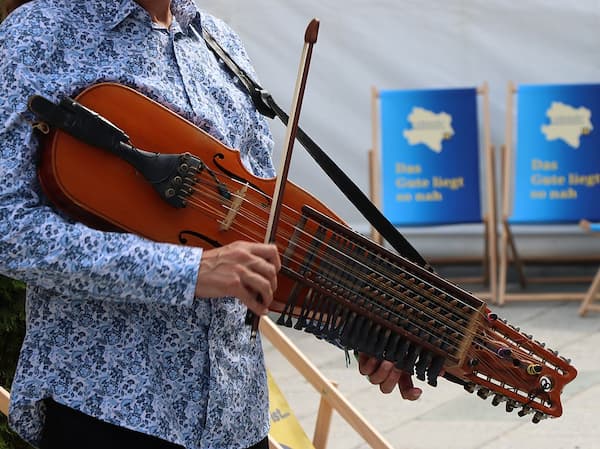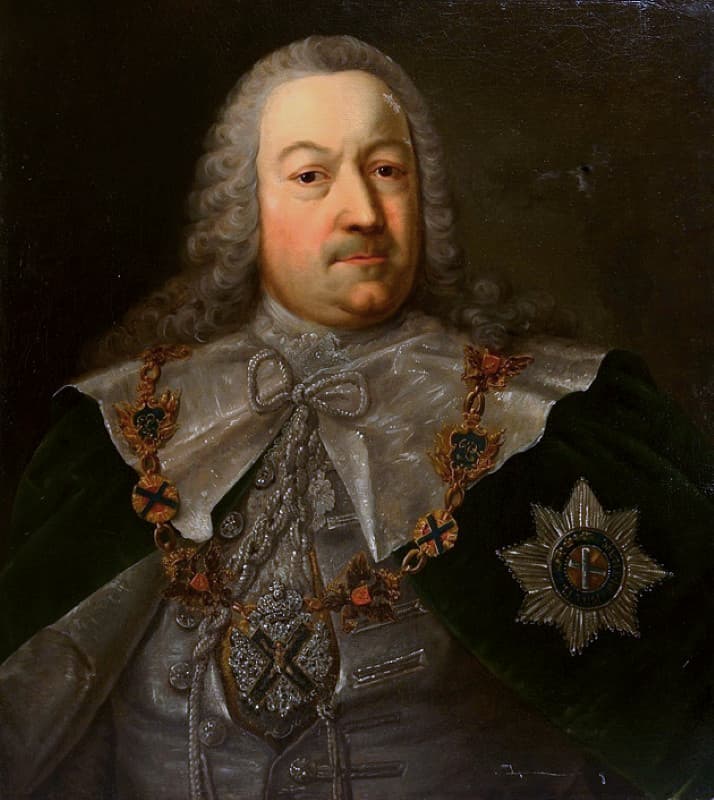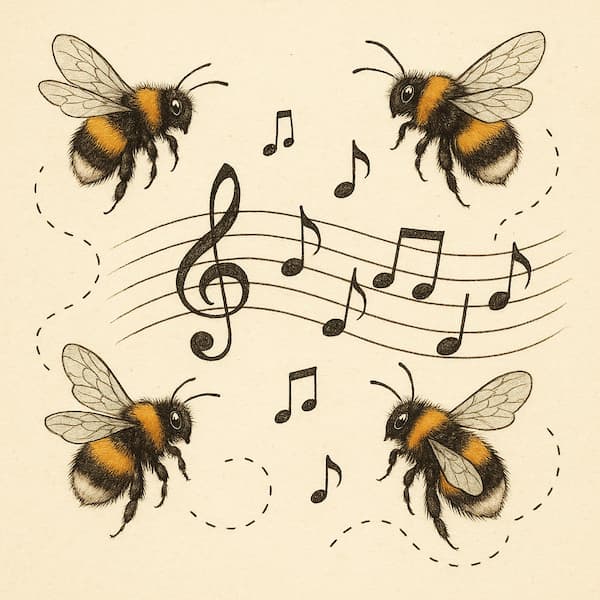The Goldberg Variations, published by Bach in 1741, is beloved by musicians. Those who don’t play a keyboard instrument have been quick to arrange it for their own specialities. We’ll start with stringed instruments and how they treat the first variation.
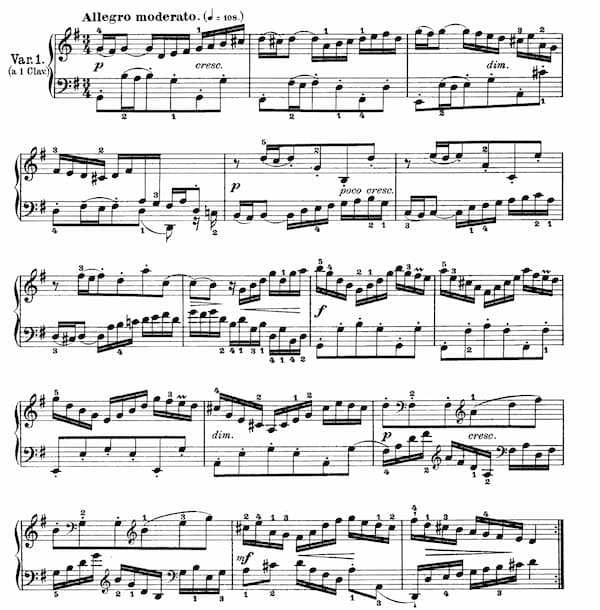
J.S. Bach’s Goldberg Variations, BWV 988 – Variatio 1. a 1 Clav. excerpt
To remind you, here’s Glenn Gould’s 1981 recording of the first variation on piano.
J.S. Bach: Goldberg Variations, BWV 988 – Variatio 1. a 1 Clav. (Glenn Gould, piano)
In this arrangement for baroque violin, the arranger and performer Jorge Jiménez described the process of reducing a work for 10 fingers on the keyboard to the two available on the violin: he described it as ‘trying to fit all the furniture of Versailles Palace into a beautiful, tiny one-bedroom attic…’ while trying to maintain the same feeling of spaciousness.
J.S.Bach: Goldberg Variations, BWV 988 (arr. J. Jiménez for violin) – Variatio 1. a 1 Clav. (Jorge Jiménez, violin)
The feeling in the arrangement for one guitar is different. With five fingers available for the strings, rather than a single bow that might stretch to cover two strings, the sound is more expansive. At the same time, it still has to omit some of the contrapuntal lines.
J.S. Bach: Goldberg Variations, BWV 988 (arr. M. Salcito for guitar) – Variatio 1. a 1 Clav. (Marco Salcito, guitar)
When arranged for 2 guitars, we have more of the original.
J.S. Bach: Goldberg Variations, BWV 988 (arr. E. Ghezzi for 2 guitars) – Variatio 1. a 1 Clav. (Tuscan Guitar Duo)
In another arrangement for 2 guitars, but now for 2 10-string guitars rather than 2 6-string guitars, the sound changes again. A 10-string guitar is a normal 6-string guitar with additional bass strings. The neck of the 10-string is wider to accommodate the doubled strings.

A classical 10-String Guitar, 2006 (photo by Michael McBroom)
J.S. Bach: Goldberg Variations, BWV 988 (arr. for 10-string guitar duo) – Variatio 1. a 1 Clav. (Duo Synaphé)
Another kind of string instrument is the cimbalom, a version of the hammered dulcimer.
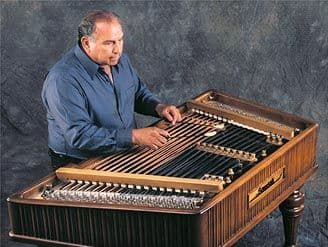
Cimbalom, Courtesy of the Somsak Family (Photo by Rhead Lown)
Here, arranged for 2 cimbaloms, we can hear the delicate counterpoint of Bach’s music. The sound, although similar to that of the harpsichord, is more mellow.
J.S. Bach: Goldberg Variations, BWV 988 (arr. for 2 cimbaloms) – Variation 1 (Agnes Szakaly, Rozsa Farkas, cimbaloms)
Another stringed instrument is the harp. It is played with 10 fingers, like the keyboard versions, but, unlike the harpsichord, is able to create a sound with duration, i.e., the sound doesn’t cut off abruptly as on a harpsichord but continues to ring.
J.S. Bach: Goldberg Variations, BWV 988 (arr. P. Ramsay for harp) – Variatio 1. a 1 Clav. (Parker Ramsay, harp)
To return to keyboards, an interesting version was made by Joseph Rheinberger in 1883, where he made an arrangement for 2 pianos, doubling the melodic lines, adding accompanying chords, and even contributing some of his own ideas to the mix.
J.S. Bach: Goldberg Variations, BWV 988 (arr. J.G. Rheinberger for 2 pianos) – Variatio 1. a 1 Clav. (Matteo Liva, Elena Valentini, pianos)
Thirty years later, Max Reger put his hand in, using Rheinberger’s arrangement as the basis for his own, adding in details of dynamics and phrasing.
Since the original Goldberg Variations was written for a 2-manual harpsichord, the addition of a second keyboard isn’t unusual. What is unusual is the fact that we now have 4 hands on 2 keyboards rather than 2 hands on 2 keyboards.
J.S. Bach: Goldberg Variations, BWV 988 (arr. J.G. Rheinberger and M. Reger for 2 pianos) – Variatio 1. a 1 Clav. (Duo Monti-Bianco)
Since the original work was to put someone back to sleep on a white night, it’s interesting to hear a larger keyboard take on the work. This version for organ, which is not a straight transcription but the organist’s own arrangement, is played on the Mühleisen organ in Bad Gandersheim.
J.S. Bach: Goldberg Variations, BWV 988 (arr. for organ) – Variation 1. a 1 Clav. (Hansjörg Albrecht, organ)
One last keyboard may be surprising – the accordion! It’s still for 2 hands, but with one hand for melody and the other for accompaniment, the flowing effect is difficult to maintain.
J.S. Bach: Goldberg Variations, BWV 988 (arr. F. Vicens for accordion) – Variatio 1. a 1 Clav. (Fanny Vicens, accordion)
Next, we’ll look at ensemble versions of the Goldberg.
For more of the best in classical music, sign up for our E-Newsletter

